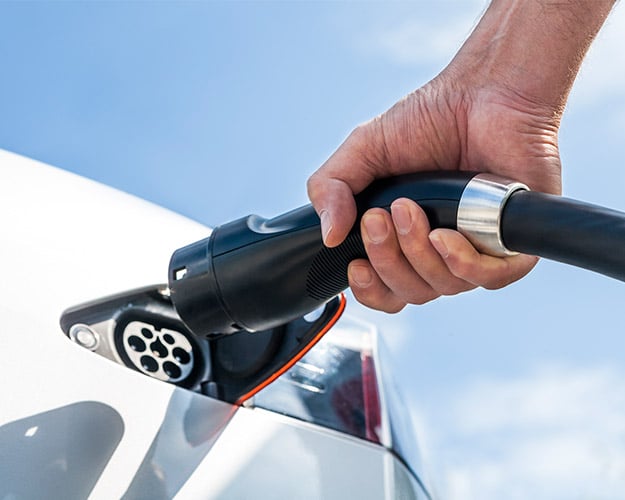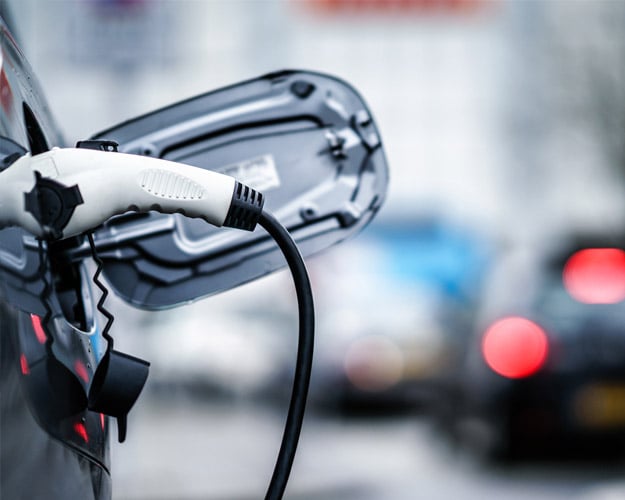Key Takeaways
- The Inflation Reduction Act provides a federal tax incentive for those purchasing energy efficient and certain pre-owned clean vehicles.
- Beginning in 2023, taxpayers may now claim a credit on purchases of used electric vehicles (EV) or fuel cell vehicles (FCV).
- To help determine eligibility, the IRS has released Frequently Asked Questions (FAQs).
The Inflation Reduction Act of 2022 provides a new federal tax incentive for individuals purchasing energy efficient and certain pre-owned clean vehicles beginning January 1, 2023.
Credit for Vehicles Purchased in 2023
Beginning in 2023, taxpayers may claim a credit on purchases of used electric vehicles (EV) or fuel cell vehicles (FCV). While the credit for pre-owned vehicles is similar to the credit for new vehicles, there are a number of differences, including:
- The amount of the credit
- North America final assembly is not a requirement
- Critical mineral and battery component requirements are not applicable
- The used vehicle credit has lower taxpayer income thresholds
To help taxpayers determine eligibility, the IRS released Frequently Asked Questions (FAQs) to clarify key revisions under the IRA. Below is a summary of some of the terms and key credit criteria (be sure to review the full FAQ document for complete information).
Like the new vehicle credit, manufacturers must certify specific vehicles meet applicable credit criteria and dealers must provide buyers with a seller’s report. As a resource, the IRS maintains a list of qualifying used vehicles.
Vehicle Requirements:
- The credit amount is the lesser of $4,000 or 30% of the sales price.
- The vehicle’s sales prices must be $25,000 or less.
- Used electric vehicles (EV) must meet the following requirements:
- Manufactured by a qualified manufacturer.
- Gross vehicle weight rating of less than 14,000 pounds.
- Powered to a significant extent by an electric motor with a battery capacity of seven kilowatt hours or more.
- The battery is capable of being recharged from an external source of electricity.
- Used fuel cell vehicles (FCV) must have a vehicle weight rating of less than 14,000 pounds.
- The vehicle’s model year must be at least two years earlier than current calendar year.
Credit Eligibility Requirements:
- Only individual taxpayers are eligible to claim the credit.
- To be eligible, taxpayers must fall under specific income limitations for the current or preceding tax year. The modified AGI thresholds:
- Married filing jointly or filing as a qualifying surviving spouse or a qualifying widow(er) - $150,000
- Head of household - $112,500
- All other taxpayers - $75,000
- The vehicle’s first transfer of ownership qualifies for the credit, in other words the vehicle’s second owner is eligible to claim the credit.
- The taxpayer may only claim the credit once every three years.
- Taxpayers with zero federal tax liability will not benefit from the credit because it is nonrefundable and cannot be carried forward.
- Vehicles must be purchased from a licensed dealer. Licensed dealers have new IRS reporting requirements for sales beginning January 1, 2023.
- Taxpayers purchasing qualifying vehicles will receive a sellers’ report from the dealer at the time of purchase. This report is required for taxpayers to complete Form 8936, Qualified Plug-in Electric Drive Motor Vehicle Credit, and claim the credit.
- The credit is claimed in the year the vehicle is delivered, which may not be the same year the vehicle is ordered, or payment is made.
The Clean Vehicle Credit under Internal Revenue Code (IRC) Section 30D for new vehicles includes similar qualifications, but is more restrictive overall.
Beginning January 1, 2023, qualified new vehicles must meet the following requirements:
- North America final assembly (required in August 2022).
- A source requirement for applicable critical minerals.
- A location requirement for the manufacturing of battery components.
- Taxpayer Modified Adjusted Gross Income limitations.
- Vehicle sales price limits.
| New Vehicle- 2022 |
New Vehicle- 2022 |
New Vehicle- 2023 |
New Vehicle- 2023 |
Used Vehicle- 2023 |
|
|---|---|---|---|---|---|
| Before Aug 16, 2022 | Aug 16, 2022 – Dec 31, 2022 |
Jan 1, 2023 – April 17, 2023 |
April 18, 2023 – Dec 31, 2023 |
Jan 1, 2023 – Dec 31, 2023 |
|
| IRS Guidance | Vehicle purchased in 2022 or before | Vehicle purchased in 2023 | Used vehicle purchase | ||
| Max Credit Amount | $7,500 ($2,500 + battery capacity) |
$7,500 ($2,500 + battery capacity) |
$7,500 ($2,500 + battery capacity) |
$7,500 ($3,750 each for critical minerals & battery components) |
$4,000 or 30% of sales price. |
| Critical Minerals | N/A | N/A | N/A | 2023: 40% of the value | N/A |
| Battery Components | N/A | N/A | N/A | 2023: 50% of the value | N/A |
| North America Assembly | N/A | Required | Required | Required | N/A |
| VIN Lookup | N/A | VIN Decoder | N/A | ||
| MAGI LIMITS | None | None | Single $150,000 HOH $225,000 MFJ $300,000 |
Single $150,000 HOH $225,000 MFJ $300,000 |
Single $75,000 HOH $112,500 MFJ $150,000 |
| MSRP LIMIT | None | None | Sedans: $55,000 Pickups, vans, SUVs: $80,000 |
Sedans: $55,000 Pickups, vans, SUVs: $80,000 |
Sales price not to exceed $25,000 |
| Sale Volume Cap | No Tesla and GM | No Tesla and GM | No Cap | No Cap | No Cap |
| Other Considerations | Written binding contract. File on an original, amended, or superseded 2022 return if delivery is in 2023. |
Only change North America assembly requirement. Delivery must be by 12/31/2022. |
No critical mineral and battery component requirements if delivered before April 18, 2023. | Critical mineral and battery component requirements begin April 18, 2023. Requirements increase annually. |
2-year-old vehicle, second owner. Purchased from a dealer. Credit available every 3 yrs. Individuals only. |
What are the differences between the Pre-Owned Vehicle Credit and the Clean Vehicle Credit?
Both the Pre-Owned Clean Vehicle Credit and Clean Vehicle Credit have sales price and taxpayer income limitations although the thresholds for pre-owned clean vehicles are lower. Unlike the new vehicle credit, the credit for pre-owned vehicles does not have manufacturing or component requirements; however, it does restrict the purchaser and where a qualifying vehicle can be purchased.
What are the next steps for the Pre-Owned Clean Vehicle Credit?
In 2023 taxpayers purchasing a used clean vehicle may claim the nonrefundable Pre-Owned Clean Vehicle Credit. Like the credit for new clean vehicles, a transfer program allowing taxpayers to directly transfer the clean vehicle credit to the dealership is expected.
When considering the purchase of a new or previously owned electric vehicle it is also important to consider the variety of state incentives that may be available.
What to know about changes to the federal income tax credits available for vehicles.
 Read the Article
Read the Article
